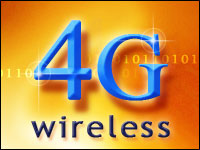
AT&T Labs has demonstrated download speeds of nearly 29 Mbps (megabits per second) on an experimental LTE network in Plano, Texas, according to a report in GigaOm.
Upload speeds reportedly hit 10.4 Mbps in the demo.
AT&T, however, is saying little publicly about its work-in-progress network. “The network is experimental and won’t reflect real-world speeds, which I’m not going to speculate on at this point,” AT&T spokesperson Mark Siegel told TechNewsWorld.
The reported 29 Mbps would greatly outpace the speeds of other wireless networks. Verizon Wireless, for example, claims download speeds of 5 Mbps to 12 Mbps on its LTE network, although it’s fuzzy about upload speeds.
The engineer who ran the tests told GigaOm that transmission speeds will drop when multiple devices access the network on a cell tower.
“The speed question is always a hard one to answer because there are so many variables,” Allen Nogee, a research director at In-Stat, told TechNewsWorld.
Three factors determine transmission speed — the width of the LTE channel, the number of devices on the network and the user’s distance from a cell tower, Nogee added.
In fact, depending on the variables, a 4G network may not necessarily be faster than a 3G one, pointed out Phil Solis, a research director at ABI Research.
The AT&T Labs Test
Apparently, AT&T Labs used MIMO antennae and two blocks of spectrum — 700MHz and the AWS band of spectrum it already owns.
MIMO is one of several smart antenna technologies. It is a technique in which multiple antennae are used on both the transmitter and receiver to improve communications performance.
MIMO offers improved data throughput and link range without requiring additional bandwidth or transmission power. It does this by improving spectral efficiency and reducing fading.
The higher the spectral efficiency of a wireless communication technology, the more bits per second it can send per hertz of bandwidth. Spectral fade refers to the reliability or diversity of a link.
This high spectral efficiency and reduced fading led MIMO to be included in wireless communications standards such as 802.11n, 3GPP LTE, WiMax, HSPA+ and 4G.
“MIMO can help speeds in certain circumstances; in others, it doesn’t improve things very much at all,” In-Stat’s Nogee remarked. “It helps in urban situations, where the signal can bounce around a bit between the base station antenna and the user, but not so much in rural situations.”
However, MIMO is not typically used in client devices apart from WiFi, Nogee pointed out.
The Subtleties of Wireless Connection
LTE networks can operate at different speeds with different spectra. However, usage is another factor that impacts speeds, Nogee said.
“Using cell towers at normal spacing, there is a given speed and capacity for a given amount of spectrum,” Nogee explained. “But operators like AT&T and Verizon can offload to WiFi or use small cells, which helps to increase capacity.”
However, the test will come when usage spikes, as AT&T found out when it began carrying the iPhone.
“Go to a large convention and see if AT&T can still give you those fast rates,” Nogee said. “That is the real challenge.”
Speed also depends on how carriers construct their wireless networks, ABI’s Solis told TechNewsWorld.
By way of example, he contrasted the architectures of Verizon’s and Sprint’s wireless networks.
“Verizon Wireless uses 20MHz of spectrum for everyone. It gives users 10MHz for the uplink and another 10MHz for the downlink,” Solis said. “But Sprint, which has 30MHz, divides that into three blocks of 10MHz each, and gives each user 10MHz for both the uplink and downlink.”
Verizon Strikes Back
AT&T will begin rolling out its LTE network in the summer. Given the demo at AT&T Labs, will its network be faster than that of Verizon Wireless?
Verizon Wireless describes its 4G LTE network as “lightning fast, lightning strong.” But the only thing it says about upload speeds is that customers can upload a photo in six seconds, which leaves a lot of questions unanswered.
Does Verizon mean high-res pix? Are we talking an 8-by-10 inch full-color glossy or a one-by-two-inch black-and-white photo?
“AT&T already has ‘faux G,'” Verizon Wireless spokesperson Jeffrey Nelson told TechNewsWorld, referring to AT&T’s HSPA+ network.
“If they were pleased with that offering they wouldn’t be following us with their eventual LTE offering,” Nelson added. “Why do you compare actual, live smoking-fast LTE service with a vapor network? If others follow AT&T’s lead, we’d be a year behind the LTE curve.”
Limping With the Lightning
In any event, the LTE networks of both Verizon Wireless and AT&T don’t quite match up to the exact specs laid down for LTE.
These specs call for downlink peak rates of at least 100Mbps; and an uplink of at least 50Mbps.
What happened? Why are Verizon’s and AT&T’s LTE network speeds so far behind those laid down by the specs?
“Today’s 4G technologies are new so they’re not so fast as they could be, and the most advanced version of 3G technology — HSPA+ — can at times be almost as fast as LTE,” ABI’s Solis explained.





















































